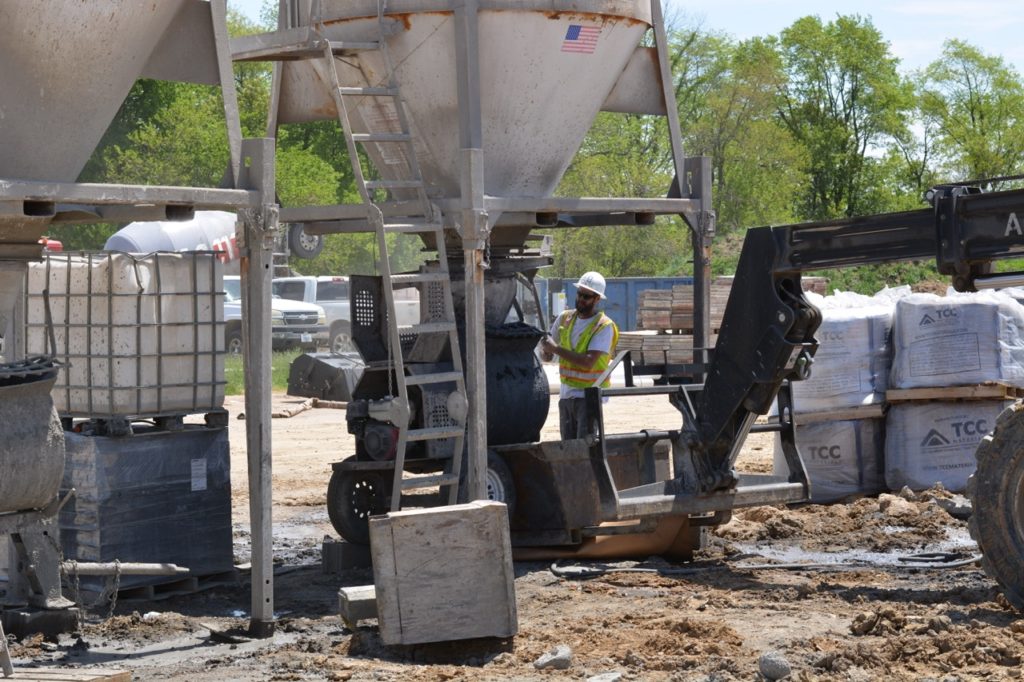6 Key Ways To Maintain Equipment Efficiency & Safety On A Job Site
Words: Isa Stein
Editor’s Note: MASONRY Magazine had the opportunity to learn from industry experts about job site equipment and efficiencies. Tom Vacala, Phil Williams, and Sam Magee talked about the importance of communication, equipment management, and more.
In the masonry industry, maintaining a high standard of job site effectiveness and equipment management is not only essential for operational efficiency but also critical for ensuring the worker's safety. By implementing proactive maintenance protocols and fostering strong communication channels, teams can navigate through potential challenges and deliver successful projects.
1. In-Field To Warehouse Communication
When the maintenance goes beyond basic repairs, communication between the field and management is critical. Conversations between the field workers and warehouse workers about equipment usage and wear, such as a mixer motor handling less than before, are the most important in managing and maintaining a working team. Without communication between the warehouse and the field, there can be masons waiting around for equipment to catch up, thus leading to more downtime.
Proper and productive conversations on a job lead to efficiency, and that is what is strived for in the industry. Phil states, "We are very, very, very clear upfront" regarding the expectations of the people involved. This way, the expectations are met, and there is a standard amongst the workers and jobs being completed. In Sam's experience, it is vital to build someone up rather than bring them down and cause more issues in the future. There are challenges faced, and there is a solution that can be brought up as a team and by working together. People make mistakes, and the way that it is managed determines the job, experience, and workers overall.

2. Processes & Best Practices
Masonry jobs put equipment to the test every day while getting beat up on job sites. "If a mortar machine tears up, it requires the new one to be fully inspected again with hose checks, filters, replacement of bearings, replacement of shafts, and replacement of motors," said Phil. Properly maintaining equipment is vital for the seamless progression of any project. Professionals emphasize the need to keep mixers and mortar tubs clean to prevent potential damage and ensure the consistent quality of materials. Furthermore, the implementation of regular clean-up routines and designated personnel for equipment maintenance significantly contributes to the overall efficiency of the operation.
Most things require a plan and layout of communication, but replacing equipment is about replacing the equipment as fast as possible with a clear and brief description as soon as it is needed. "Our foremen are lightning-fast when their mixers go down… That's their bread and butter when it comes to a site," said Sam. When it comes to a laborer on-site who is trained in types of maintenance, Sam says, "We tailor the preventative maintenance to the site's abilities." With a larger crew, there are people rotating mixers, filters, and oil and maintaining the job with rudimentary repairs. It is very important to have people out there that check the equipment status before it goes into the field as well because if there is an issue, it can lead to safety incidents along with other problems. Before and during a job, the person tending to the maintenance is given procedures and processes of what needs to be done daily for the job to maintain efficiency.
3. Attention To Detail
In the process of communication, one key challenge is the inconsistency of problems encountered. This inconsistency often results in specific issues being overlooked during equipment check-ins, as individuals tend to focus only on what they are familiar with. Field workers may encounter problems that go unreported, such as Tom's incident, where a malfunctioning drill bit led to a potentially hazardous situation when it fell from a skyscraper. Therefore, it is essential for anyone engaging with equipment on a job site to remain attentive to all details. This requirement holds true not only for field workers but also for those responsible for inspecting the equipment prior to its use. One person may be adamant about checking motors consistently, but there may be a messy bucket that is slowing them down, or vice versa, someone who keeps a very clean machine but might miss the maintenance of the motor. Sam says, "The importance of communication lies in situations where one may get a machine back and say, 'Hey, that mixture came back in great shape. But next time, would you mind checking the oil every two days for us?' or something like that." Sam emphasizes that effective communication plays a pivotal role in scenarios such as this.
4. Adaptability
Through years of refining the processes, the adaptability of equipment and maintenance becomes a central focus on every job site. Sam's experience highlights numerous instances where the team successfully navigated complex manufacturing challenges that posed serious threats to the fleet. By planning and learning from past mistakes, the team adapted and ensured smooth operation of the fleet.
Amid the supply chain issues caused by the pandemic, many people encountered difficulties with the availability of essential parts and components. Sam recalls the initial challenge stemming from the unavailability of a specific engine. In an effort to adapt, Sam began outsourcing parts from where they were available and looked at the sizes used on-site as an assessment. Now, it has become common practice to order these parts in bulk. The justification lies in the concept of having 50-plus machines that require these parts, eventually needing them, and then having them readily available. The adapted system now efficiently tracks and bills the parts used on a job, particularly those that incurred damage.

5. Digital Tracking & Methods of Communication
In the industry, there are many different ways to track equipment maintenance and keep lines of communication open between those in the field and those in the warehouse. These technological solutions offer a range of benefits, enabling streamlined tracking of maintenance tasks, such as routine inspections, repairs, and more. Additionally, they facilitate communication among team members, regardless of whether they are in the office, in the warehouse, or in the field. This ensures that any issues or concerns regarding equipment are promptly addressed with options for push notifications, emails, and more. With these integral tools, the industry can embrace a more organized and systematic approach to equipment management, enhancing overall productivity and minimizing operational downtime.
6. Relationships With Suppliers & Manufacturers
Fostering strong relationships with manufacturers is instrumental in facilitating proper safety inspections and maintenance checks. While it might seem cost-effective to engage with multiple manufacturers, the potential challenges of locating specific parts for a machine or even finding the right technician for repairs can offset any initial cost savings. When you have built a relationship with suppliers, such as Phil's experience of being close to Non-Stop Scaffolding, there are more ways to involve them in any maintenance or equipment inquiries that might come up from those in the field. "They'll come to inspect our scaffold, we bring it back in and say, 'Hey, man, these cables are good,' 'Hey, this winch system doesn't look right,' 'Hey, this rail system needs this.' And we constantly order parts for those who go back out." This collaborative approach results in the seamless ordering of necessary parts, ensuring that the workforce remains equipped and prepared for their tasks at hand.